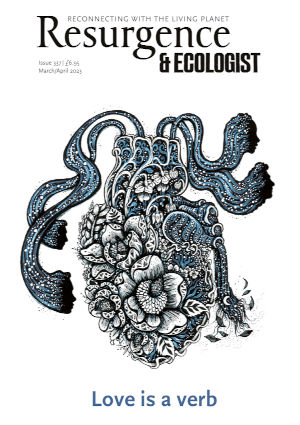“I wasn’t born a witch,” Rebecca Beattie begins, her PhD in creative writing shining out in that first, provocative and intriguing sentence. She certainly knows how to hook a reader … Tell me more!
Beattie tells us that she has been practising witchcraft for 20 years, 15 of them within the Gardnerian Wiccan tradition, and that she is now a Wiccan priestess. By day, however, she works for a major charity.
Thanks to social media, witchcraft has never been more popular – the hashtag #witchesofinstagram has been used over 8 million times and there is now a thriving witch community on TikTok too. But what does it mean to be a witch today? Beattie’s new book, The Wheel of the Year: Your Nurturing Guide to Discovering Nature’s Seasons and Cycles, will lead the curious on an exploration of pagan traditions and their modern-day relevance.
The book focuses on the Wiccan calendar, which is split into six-weekly sections, like spokes on a wagon wheel (not the biscuit, Beattie clarifies!). Each gives the opportunity to pause and acknowledge the season’s festival, from Imbolc, Beltane, Lammas and Samhain to the Spring Equinox, Midsummer, Autumn Equinox and Yule.
Beattie guides us on how to match our lives to the rhythm of the seasons, with a time to rest and a time to sow new ideas. Those who might be put off by a certain concept of witchcraft will be relieved – there is nothing hocus-pocus here, but rather a deep, holistic sense of connection to Nature. Beattie writes: “You certainly don’t have to identify as pagan to find meaning in the Wheel: as long as you are a lover of Nature and want to spend more time there, reflecting, observing, dreaming, creating, healing, then the Wheel of the Year can help you to do just that.”
For each festival, we are given ideas for actions that are based on traditional Wiccan rituals but made highly accessible for a busy, modern life. This includes decorating with spring greenery, gathering the first dew on Beltane morning, making dandelion orangeade, journalling, and discovering local wildlife, to give just a few examples.
Some of these activities are already part of my life in a simple way, and Beattie adds a welcome thread of spirituality. Bringing thoughtful ritual to actions deepens the meaning and hence the benefits. For example, I’m a fan of an Epsom salt bath to soak aching muscles, and with Beattie’s guidance this becomes a way to mark Imbolc. The sacred salt bath can cleanse us of pain. Adding jasmine (and the practical tip that you can use a jasmine green tea bag) to the bath, reading special words and writing out past upsets, before dissolving the paper into the water, takes the mundane to the transformative.
I realise that whilst my life is connected to Nature and includes self-care, it lacks ritual and the intention that comes with that. Beattie tells us: “Ritual is an essential part of living a mindful, embodied life in the embrace of Nature.” It doesn’t have to be sombre. It can be reverential, joyful or mirthful.
And it is certainly joyful. Beattie’s book brings us a powerful way to embrace our own wisdom and strength outside of the restrictive, stereotyped expectations of society. It encourages us to pause, rather than rush headlong through life. It’s a way to make the time and space to really experience the world around us.
The Wheel of the Year is a powerful concoction of poems, spells, incantations and rituals, all wrapped up in a blanket of warm, friendly words. Maybe I’m a witch too after all. Maybe you are.







